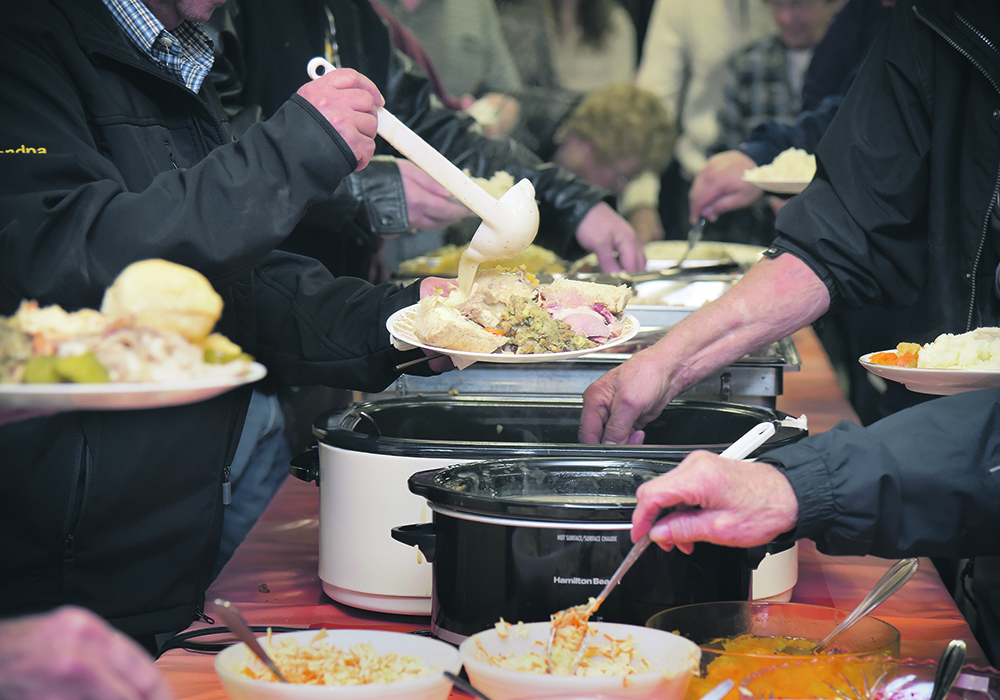Speakers at a recent U of A forum say food will be produced significantly differently 50 years from now than it is today
EDMONTON — A group of agriculture specialists were asked to gaze into their crystal balls during a University of Alberta event to see what would be on the table in 50 years and their answers were as wide as their specialties.
Ellen Goddard, a University of Alberta economist and professor believed the food for our Christmas dinner would probably look the same, but that would be where the similarities end.
“I am not sure how it will be created or where it will be created, or how we are going to create it in our kitchen, but I will lay you odds we will still want to see something that looks like possibly turkey, possibly mashed potatoes and gravy, but it will come from different origins,” Goddard told the audience at the university’s chancellor’s forum.
Read Also

Stacking Canada up on gene editing livestock
Canada may want to gauge how Argentina and other countries have approached gene editing in livestock and what that has meant for local innovation.
Consumers still in shock from not finding everything in the grocery store during COVID-19 now have a bigger interest in local food and a desire for more contact with farmers. Supply chain disruptions created an openness to change, said Goddard.
“My own research would suggest we are more tolerant of technology and food now because people have realized it is not going to be automatic that every single food stuff will appear in grocery store shelves in the same format. People are willing to try things they were a little opposed to before,” said Goddard of Edmonton.
Bill Shotyk, a University of Alberta professor and Bocock Chair for Agriculture and the Environment, said there won’t be one single solution to growing food in 50 years, but people growing their own food will be part of the change.
The soil scientist said he is surprised how much food he can grow in his small backyard in Edmonton. This year when he returned to the family farm in Ontario he dug out an old rototiller and created a garden from an old barnyard.
“The food was absolutely amazing. I am amazed what I can grow a tiny backyard in Edmonton and my garden in Ontario. It fed a lot of friends and family. I am inspired to do much more of that,” said Shotyk.
Ensuring the soil is well looked after will be one of the keys to our future food system, he added.
“I take good care of my soil and the soil rewards us. Soil is more than a rooting medium for keeping the roots in place. There won’t be one solution going forward. There will be many solutions and growing your own, that is one of them,” he said.
Gleise Medeiros da Silva, a University of Alberta scientist studying ways to increase beef cattle efficiency, said she hopes steak is on the menu in 50 years. Despite its sometimes-bad reputation, she said beef is an efficient way to deliver nutrients to the population. Beef cattle are also an important part of the ecosystem, encourage biodiversity and can help sequester carbon.
“When we think about beef production we need to think about the livelihood of farmers who are working with beef production and all that beef production represents to economics. Beef production is much more helpful and beneficial to the world than harmful,” said da Silva.
More importantly, da Silva hopes in 50 years the world will have figured out how to eradicate hunger and improve food distribution so everyone can live a healthy life.
“Most important is that food is accessible to everybody.”
Isha Datar, executive director of New Harvest, a global non-profit in cellular agriculture, said what we will eat in 50 years depends on the choices made today and how that impacts climate.
“I don’t know if at Christmas dinner it will be cold outside at Christmas,” said Datar.
As more viruses, flus and antibiotic resistance impacts animal agriculture, Datar wonders if there will be less food options involving livestock and more food that is unfamiliar.
“But if we make the right investments into diversifying our food systems and creating more resilience, and bounce back from changes in the supply change and create resilience in a climate change future, we could have a wide diversity of food,” she said.
Alison Sunstrum, chief executive officer of CNSRV-X, a company involved in agricultural technology and carbon markets, said her company has just invested in Colossal, which hopes to bring back the woolly mammoth. Sunstrum said she may be eating meat from a woolly mammoth or other extinct mammals because of technology in 50 years.
“One thing I really hope is that whatever I am eating, every single person around the world has the same access at the same cost at the same texture. I hope everyone has the same access.”
Sunstrum said the food of the future will rely on scientists, biologists, bankers and politicians working together to find solutions and innovations.
“Over the next 30 years we will reimagine everything we have from food to materials. What it will take is money.”















